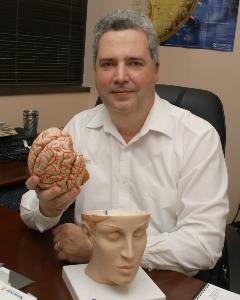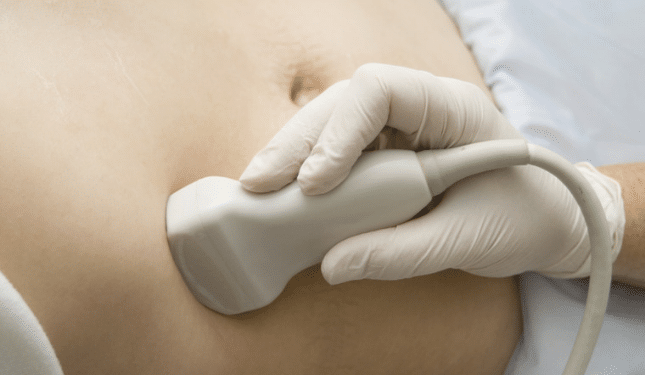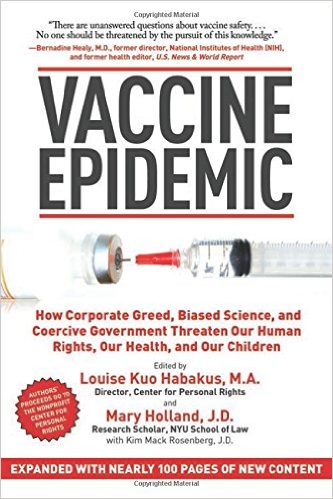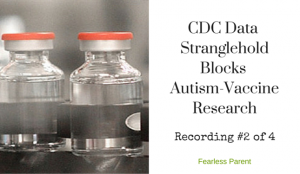Introduction
The term ultrasound refers to oscillating sound waves that travel through a medium, either gaseous, liquid, or solid, at a very high frequency. Sound waves in physics are also known as compression waves because they produce alternating compression and rarefaction (a push and pull effect) when traveling through a medium. Audible sound usually travels at 10 to 20 thousand cycles per second. By comparison, ultrasound waves travel at a much higher frequency, that is, several million cycles per second. In the animal kingdom, bats, whales and dolphins use ultrasound for echolocating objects in their surroundings allowing them to both navigate and capture their prey.
The idea of using ultrasound for practical purposes came after the sinking of the Titanic at the turn of the century when sonar (SOund NAvigation and Ranging) was proposed as a way of screening for the submerged component of an iceberg.
In the mid 1950’s a Scottish physician by the name of Ian Donald borrowed an ultrasound machine, that had been used to detect flaws in metallurgy, in order to investigate differences in tissue densities in biopsied abdominal masses obtained from over one hundred patients. His results, published in The Lancet were well received within the medical field. The potential to use the technique in order to visualize the human fetus was soon realized and its use spread quickly. Commercial equipment became available in 1963, and by the late 1970’s ultrasound was part of the standard of care in obstetrics.
Kelly Brogan, MD on Ultrasound Use in Obstetrics
Ultrasound and autism
The use of ultrasound was deregulated in the 1990’s as a result of an obesity epidemic. In this regard, an eightfold increase in energy was allowed by the FDA in order to better visualize the babies of obese women. This time frame coincides with the escalating prevalence of autism in our country. This sort of correlation does not imply causality. Truthfully, none of the supportive evidence that I will provide shows a causal relationship. However, they indicate a need for further studies and to apply caution when using the technique.
My inclination to consider ultrasound as a possible risk factor for autism spectrum disorders (ASD) is derived from the following lines of evidence:
1) Documented adverse outcomes of ultrasound are commonly seen in autism. The use of ultrasound has been reported to produce growth retardation, delayed speech, learning difficulties (dyslexia), and increased prevalence of left handedness. All of these factors are commonly seen in ASD.
2) Risk factors that would promote either an increased number of ultrasound exams during pregnancy or an increased energy are also risk factors for ASD. This commonality is evident in pregnancies where the mother is obese, older, multiparous (having twins or triplets) or there is evidence of threatened abortion.
3) Epidemiological studies in Third World countries (Somalia) where the prevalence of autism appears to be low (along with diminished use of ultrasound) skyrockets when they immigrate to industrialized nations. Also, select populations within industrialized nations (e.g., Amish) that tend to forgo the use of ultrasound seemingly have a lower prevalence of autism.
4) Animal studies in different species (both chicks and rodents) have shown changes in-keeping with an autism phenotype, e.g., changes in learning, locomotor activity, and socialization (the latter not caused by anxiety).
5) The mode of action of ultrasound could well explain known brain abnormalities of autism. Ultrasound has well established effects on rapidly dividing cells (also called germinal cells) and its ability to regulate growth factors. The FDA has allowed ultrasound to be used to trigger tissue regeneration in bone fractures, and a similar growth effect has been observed for cartilage. In previous blogs and publications, I have detailed how autism–both idiopathic [unknown cause] and syndromic [known cause]–appears to be the result of a single mechanism: the division of germinal cells and their anomalous migration during brain development (see Casanova et al., 2013 and the cause of autism, part 1 and part 2).
6) The potential effect on rapidly dividing cells could help explain the gender bias in autism (i.e., 3-4 males for each female) due to the protective effects of estrogen receptors (i.e., a group of membrane bound proteins activated by the hormone estrogen) on these cells. A similar gender bias is noted in other conditions that similarly affect rapidly dividing cells within the core of the brain (e.g., hemorrhages in extreme prematurity).
7) Once germinal cells divide in a defective fashion they also migrate abnormally to their final destination. The brains of autism spectrum disorder individuals show clusters of cells in the white matter and an effacement of anatomical features within the cerebral cortex. There are clusters of misplaced neurons in the core of the brain, along the white matter, and just below the cortical gray matter of autistic individuals. Thus, the cerebral cortex of autistic individuals show evidence of malformation (dysplasia) explained by migratory defects. In prenatal ultrasound, Ang et al (2006), using a mouse model, showed migrational abnormalities and cortical derangements.
None of the above evidence provides a causal relationship but indicate the necessity for further research.
Discussion
Ultrasound is not an inert technique with innocuous side effects. A lack of skepticism bordering on overconfidence has led the medical community to overuse ultrasound in obstetrics.
END USER DISCRETION ON EXPOSURE LEVELS
During the first few decades of ultrasound’s use in prenatal care, the FDA strictly regulated absolute intensity levels according to the specific application. Now, however, risk is assessed by real-time thermal and cavitational indices only available on the device itself. This has shifted control away from a regulatory authority dictating absolute exposure levels, to the end user who interprets machine output and adapts usage based on medical experience (Barnett et al. 2000).
MACHINE RELIABILITY
To complicate matters, machine reliability is being called into question. Recently, a series of studies assessing ultrasound transducer error rates revealed that, of seven manufacturer’s equipment tested across 676 different transducers, on average 40% of those transducers were defective (Mårtensson et al. 2009). All companies tested exhibited a minimum of 20% error rates, while one company tested as high as 67%.
A separate study by the same research group sampled additional ultrasound transducers in a single hospital setting, finding 81 of 299 actively-used ultrasound machines to be defective (Mårtensson et al. 2010).
Not only for the purpose of image quality and diagnostics is it imperative that ultrasound machines perform as they are intended: faulty transducers lead one to question whether the safety indices are accurately gauging exposure levels and, if not, what the true range of exposure levels may be. With faulty equipment, there is no way to ensure that exposures are not reaching harmful levels.
POOR UNDERSTANDING OF POSSIBLE RISKS
In addition to questionable transducer performance, practitioners and sonographers who routinely utilize ultrasound in their practices appear to be poorly educated as to the possible risks of ultrasound exposure.
In a survey of 130 end users:
- 82.3% failed to demonstrate understanding of the term “thermal index” which gauges temperature levels within exposed tissue
- 96.2% failed to demonstrate understanding of “mechanical index” which measures cavitational levels within the tissue, and, alarmingly,
- only 20% of end users knew where these safety indices were located on the machines (Sheiner et al. 2007).
While patient safety is now dependent on machine performance and sonographer judgment, it is clear that earlier FDA deregulation has placed the onus of that safety on the shoulders of faulty equipment and undereducated end users.
Editor’s note: For more information, we invite you to listen to our recent radio show featuring the author, and to read his latest blog on this subject.
Author’s Note: Excessive, non-indicated use of ultrasound is dangerous and may be tied to the ever increasing prevalence of some neurodevelopmental conditions. Urgent government regulation is needed. Selling equipment through Amazon or eBay to non-health professionals should be prohibited. The use of ultrasound for keepsake images and other non-medical purposes should be banned. References below.
 Manuel Casanova, MD is the Gottfried and Gisela Kolb Endowed Chair in Outpatient Psychiatry and a Professor of Anatomical Sciences and Neurobiology at the University of Louisville. He is a researcher and investigator into the role of ultrasound technology in brain-based pathology seen in autism. His research has focused on the cell minicolumn, a vertical unit of 80 to 100 neurons having a common latency of response to stimulation. His most recent studies have investigated the presence of abnormalities of minicolumnar organization and lateralization in the brains of patients who exhibit language disturbances, including autism, Asperger’s syndrome, and dyslexia. He is internationally known for his work in autism.
Manuel Casanova, MD is the Gottfried and Gisela Kolb Endowed Chair in Outpatient Psychiatry and a Professor of Anatomical Sciences and Neurobiology at the University of Louisville. He is a researcher and investigator into the role of ultrasound technology in brain-based pathology seen in autism. His research has focused on the cell minicolumn, a vertical unit of 80 to 100 neurons having a common latency of response to stimulation. His most recent studies have investigated the presence of abnormalities of minicolumnar organization and lateralization in the brains of patients who exhibit language disturbances, including autism, Asperger’s syndrome, and dyslexia. He is internationally known for his work in autism.
If you liked this blog, please like the Fetal Sonograms Safe? Facebook page, and sign the petition for more research and regulation.
References
Ang ES, Gluncic V, Duque A, Schager ME, Rakic P. Prenatal ultrasound waves impacts neuronal migration in mice. Proc Natl Acad Sci USA 103(34):12903-10, 2006.
Barnett SB, Ter Haar GR, Ziskin MC, Rott HD, Duck FA, Maeda K. International recommendations and guidelines for the safe use of diagnostic ultrasound in medicine. Ultrasound Med Biol. 2000; 26, 355–66
Casanova MF, El-Baz A, Kamat SS, Dombroski BA, Khalifa F, Elnakib A, Soliman A, Allison-McNutt A, Switala AE. Focal cortical dysplasias in autism spectrum disorders. Acta Neuropathol Commun 1(1):67, 2013.
McClintic AM, King BH, Webb SJ, Mourad PD. Mice exposed to diagnostic ultrasound in utero are less social and more active in social situations relative to controls. Autism Res doi: 10.1002/aur.1349 (Epub ahead of print)
Mårtensson M, Olsson M, Segall B, Fraser AG, Winter R, Brodin LA. High incidence of defective ultrasound transducers in use in routine clinical practice. Eur J Echocardiogr. 2009; 10: 389–94
Sheiner E, Shoham-Vardi I, Abramowicz JS. What do clinical end users know regarding safety of ultrasound during pregnancy? J Ultrasound Med. 2007; 26: 319–25
Stanton MT, Ettarh R, Arango D, Tonra M, Brenann PC. Diagnostic ultrasound induced changes within numbers of cryptal mitotic and apoptotic cells in small intestine. Life Sc i68(13):1471-5, 2001.













The use of ultrasound is making headway into new medical technology. Now it is being advocated as a way to replace the stethoscope. Although I do believe it may offer many advantages, no mention of safety studies is made. It appears that the safety of ultrasound is accepted without further qualifications.
See: http://bit.ly/1mRMoiR
I was considered high-risk for my 2nd pregnancy, as my first child was born at 26 weeks due to a weakened cervix. I had 35 ultrasounds during a 37 week pregnancy. That child, almost full-term, almost 9 lbs, regressed into autism at 2. My first child, weighing 2 lbs at birth, is a successful college sophomore now. And I do believe the ultrasounds played a part. With my preemie son, we were encouraged by NICU staff to delay and choose vaccines wisely. We were told it was because of his prematurity that he could be affected. Did not think the same applied to my full-term son. Learned the hard way.
Christina Fergo, your story is similar to mine. I lost three babies before I got pg with my youngest (I have 3 other kids) and was on bedrest until 12 weeks..off until 15.5 weeks when PTL started. We had a lot of ultrasounds, and while I wish we didn’t have to, in the end they were helping us see things so I have mixed feelings. I was admitted a few times, on mag sulfate, all sorts of things to get him further along and I wonder what, if any/all of it, contributed to his autism. Was slightly induced at 37 weeks and he had issues at birth but the u/s did help us as we were alerted to probs…tough call. I’d have preferred less u/s but glad for the ability to learn things that help.
My intuition told me this was bad!
I had a car accident with twin boys at 24 weeks. I had 15 ultrasounds and my sons have Autism and Aspergers. Also on terbutaline sulfate for preterm labor for 13 1/2 weeks and c-section.
Also had MgS and terbutaline for 14 weeks + bed rest.
I am absolutely convinced that the rise in prenatal ultrasounds has caused the rise in autism. Yes, some women have multiple ultrasounds with no adverse effects – but as they say, timing is everything. If you happen to have an ultrasound at the moment fetal brain cells are due to migrate to where they belong, and the ultrasound prevents this migration, then I believe you end up with an autistic child. So WHY are these ultrasounds not only allowed, but PUSHED on pregnant women?